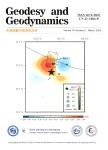Rupture behavior of the 2017 M_(W)6.6 Poso earthquake in Sulawesi,Indonesia
Rupture behavior of the 2017 MW6.6 Poso earthquake in Sulawesi,Indonesia作者机构:Badan MeteorologiKlimatologidan Geofisika(BMKG)Jakarta10610Indonesia Sekolah Tinggi MeteorologiKlimatologidan Geofisika(STMKG)Tangerang Selatan15221Indonesia
出 版 物:《Geodesy and Geodynamics》 (大地测量与地球动力学(英文版))
年 卷 期:2021年第12卷第5期
页 面:329-335页
核心收录:
学科分类:070801[理学-固体地球物理学] 07[理学] 0708[理学-地球物理学]
基 金:Fabio Villani
主 题:Finite-fault Rupture process Earthquake source Seismogram
摘 要:On May 29, 2017, the MW6.6 Poso earthquake occurred in Central Sulawesi, Indonesia, causing moderate damages. The mainshock rupture and primary aftershock cluster occurred in the active Palolo-Sausu tectonic zone, and some aftershocks also took place around the Tokararu fault. However, the rupture mechanism of this earthquake and its relation to regional tectonics are not clear. In this study, the rupture process of the Poso mainshock is estimated by finite-fault waveform inversion, which is constrained by teleseismic bodies and surface waves. The rupture propagates upward unilaterally in a southwest-dipping moderate-angle(~34°) normal fault beneath Tokorondo Mountains, with a notable~15% initial moment release at the first 4 s of the ~12 s rupture duration. The average and peak slip are0.5 m and 1.5 m, respectively. The rupture velocity is relatively slow(less than 2.5 km/s), and the Coulomb stress changes due to the mainshock are obtained using the inverted coseismic slip.



